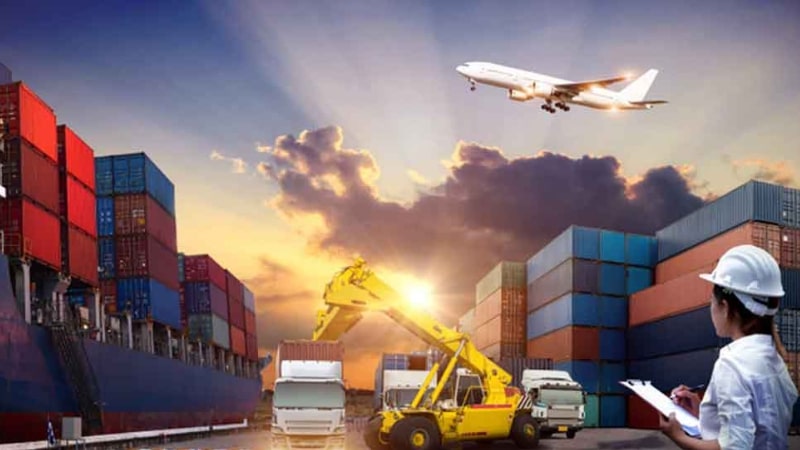How Are EPR Laws Impacting the International Supply Chain?
This is a guest post by Ellie Gabel.
Extended producer responsibility laws are creating ripples of change in international supply chains, from packaging to product design. Over the past several years, numerous jurisdictions have enacted laws and regulations surrounding extended producer responsibility, or EPR, which refers to business sustainability. How are these laws impacting businesses and their international supply chain partners?
Accelerating the Shift to Green Packaging

One of the most notable results of new EPR regulations is a faster shift toward green packaging. Businesses need to make a concentrated effort to adopt more sustainable packaging in order to comply with the recycling goals outlined in EPR regulations.
For example, the EU has established standards for packaging recycling. According to the official directives published by the EU, at least 65% of all packaging waste must be recycled by 2025. Seventy-five percent of paper and cardboard waste specifically must be recycled. These are ambitious targets, but that may be what’s needed to spark widespread change.
Many EPR directives have been law since 2020 or even earlier, but the pressure to meet recycling targets is increasing as deadlines approach. As of 2023, only 49% of municipal waste is recycled in the EU. This creates a challenge for businesses since a lack of recycling means a lack of material for recycled packaging options.
While the EU was the first region to enact EPR regulations, the U.S. is now following suit. As of 2023, several states have passed or reviewed similar legislation. California has the most comprehensive EPR regulations, which closely mirror those in the EU.
The Plastic Pollution Prevention and Packaging Producer Responsibility Act requires 100% of packaging in California to be recyclable by 2032. This includes at least 65% of all single-use plastic packaging.
The shift to green packaging in the EU and states like California might specifically include increased collaboration with international supply chain partners. For example, California businesses might begin working more closely with international recycled packaging suppliers. While that is good for stimulating widespread growth in the supply chain, it may also mean local suppliers will lose some business if they can’t adapt to green packaging needs.
Increasing Investment and Innovation
Extended producer responsibility is forcing businesses to reconsider everything from product design to packaging to the product life cycle. Regulations like green packaging directives are motivating businesses to invest time and resources into improving sustainability at every stage of product development. This activity could have major long-term implications for international supply chains.
For example, pressure to reduce supply chain waste is increasing innovation in sustainable packaging, leading to some amazing innovations. Bioplastics are one such innovation to emerge over the past several years. These biodegradable plastics are designed to deteriorate naturally without hurting the environment. They offer the benefits of plastic packaging without the harmful side effects or long-term waste.
Businesses are also increasing investments in new product life cycle designs. Conventional product development typically does not consider end-of-life plans. However, EPR laws are changing that.
The fashion industry is a perfect example. The EU’s EPR regulations are already impacting the global fashion supply chain. Europe has long been the heart of the fashion world, so new business practices in the EU have a major impact on the entire market.
EPR laws are driving many fashion brands to reduce textile waste and use more recycled fabrics. New strategies range from a growth in clothing resale markets to increased use of sustainable fabric dyes.
Shifting investment in sustainable clothing is changing the way suppliers and manufacturers around the world operate. For instance, with more European fashion brands leaving toxic dyes behind, textile manufacturers need to transition to clean, water-based alternatives.
In the U.S., states like California are hubs for some of the world’s biggest packaging consumers, such as Amazon. Big companies like this can face intense scrutiny and fines if they fail to meet EPR regulations.
New legislation around green packaging may spur leading e-commerce companies to rapidly shift their investments into developing new types of packaging. For example, in 2022, Amazon announced plans to reduce packaging and begin shifting away from non-recyclable packaging. While this move is good for the environment, it may have a temporary negative impact on manufacturers and suppliers as they adjust to new business models.
Improving Awareness of Supply Chain Sustainability
EPR laws are pushing businesses to change their approach to consumer waste. Government agencies aren’t the only voices calling for improved sustainability, though. EPR laws reflect a growing desire for green products among consumers.
Surveys show that consumers are buying more sustainable goods and considering environmental impact more when shopping. This is particularly true among Millennials and Generation Z. For young people, sustainability can be a deal breaker.
EPR laws are forcing businesses to improve their awareness of their supply chains’ impact on the environment. Doing so will eventually result in reduced carbon footprints and help businesses align with modern shoppers’ priorities.
Unfortunately, many businesses simply aren’t aware of all the negative side effects conventional supply chain practices can have. Complying with EPR laws around the world requires expanding supply chain visibility so these negative impacts finally come to light. Once businesses are able to identify where they can improve on sustainability, they can take action to reduce waste and emissions.
EPR laws apply to businesses most, but their positive impact on sustainability awareness will trickle down through international supply chains. As brands work to improve their products’ environmental impact, suppliers and manufacturers will also need to adopt more sustainable practices. Over the next several years, this could lead to a significant decrease in non-recyclable packaging and other consumer goods waste.
Building Cleaner Supply Chains With EPR
Extended producer responsibility is motivating businesses to expand their supply chain visibility and take initiative to improve sustainability. EPR laws around the world emphasize ambitious goals for reducing packaging waste. As businesses strive to meet these goals, they will spark a ripple effect of positive change throughout international supply chains. Eventually, it could result in significant declines in waste from packaging and other consumer goods.
This was a guest post by Ellie Gabel.
Ellie is a freelance writer who loves exploring the latest advancements in tech and science and how they’re impacting the world we live and work in. She’s also the associate editor of Revolutionized.com.





